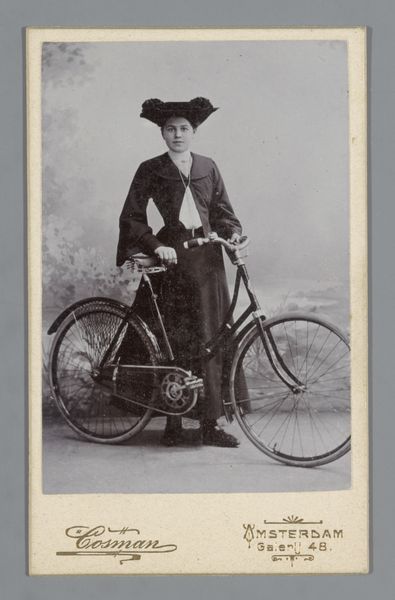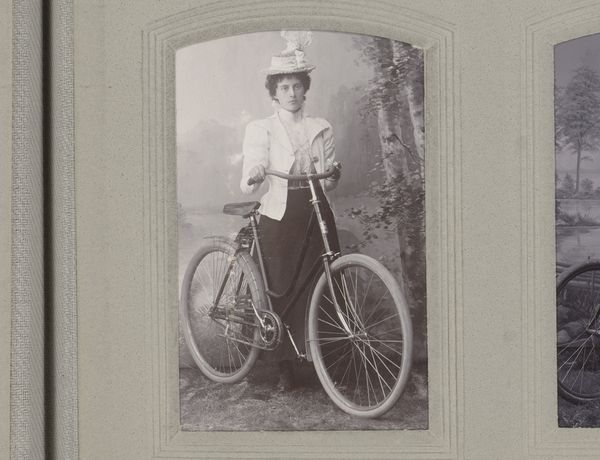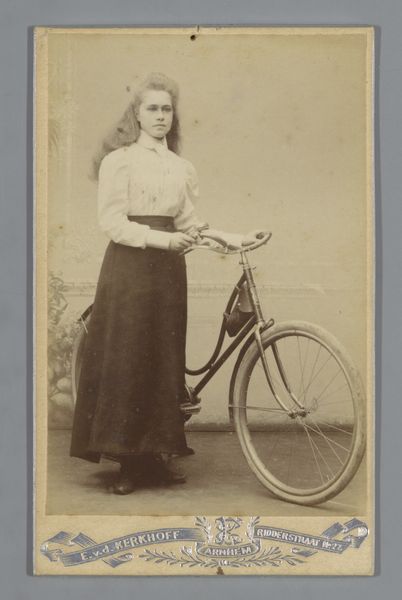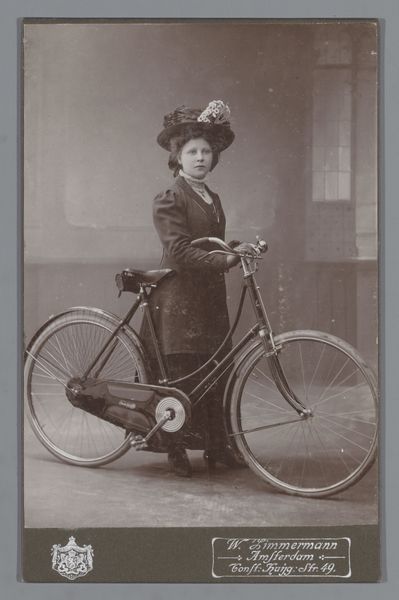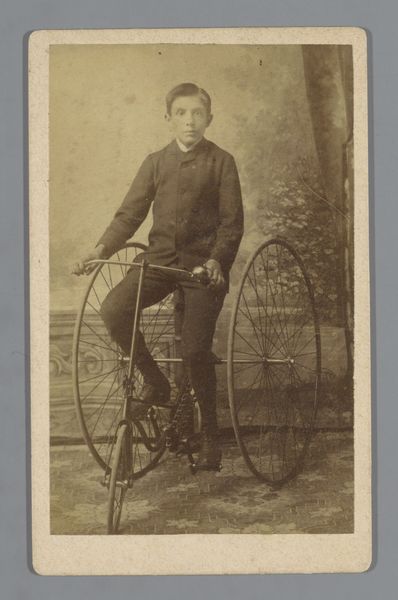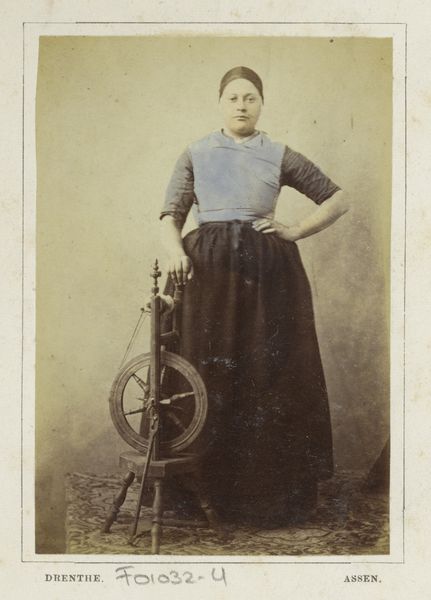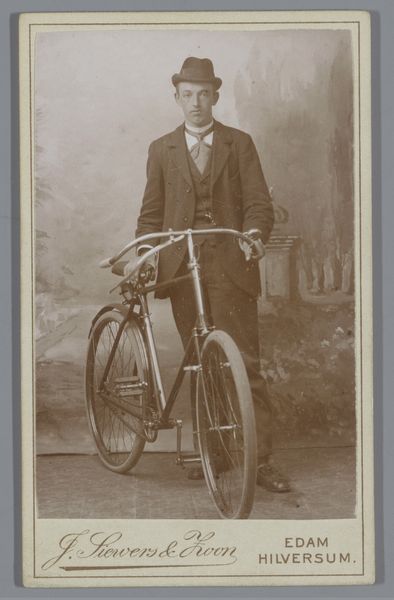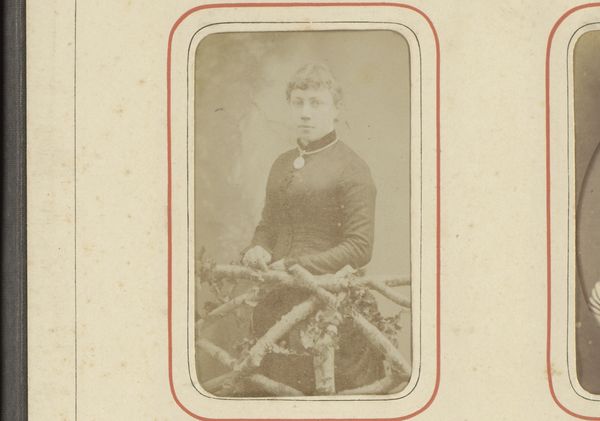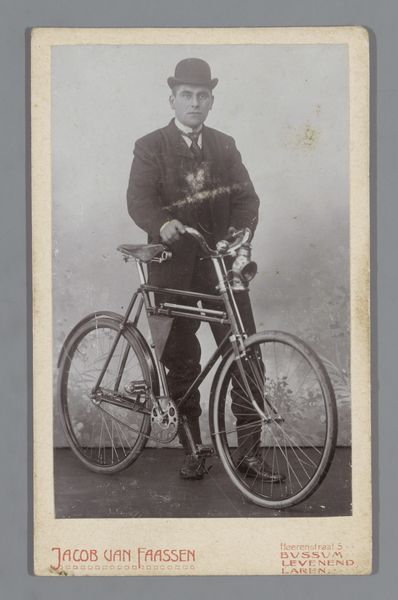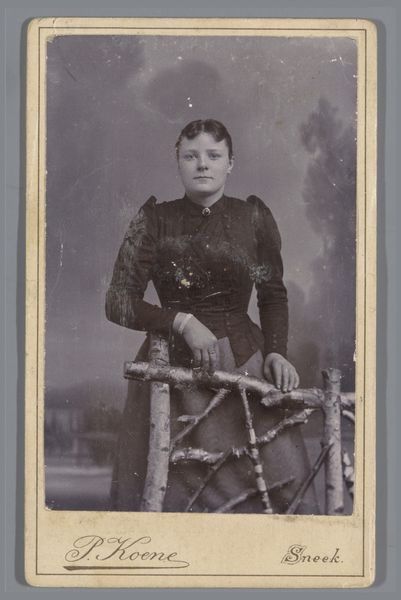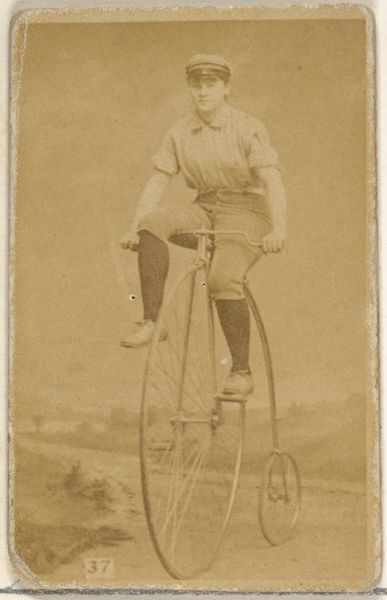
Dimensions: height 99 mm, width 62 mm
Copyright: Rijks Museum: Open Domain
Curator: This is a fascinating piece. It's a print, a photographic portrait titled "Portret van een onbekende vrouw met een fiets," or "Portrait of an Unknown Woman with a Bicycle," created sometime between 1890 and 1920. Editor: There's something so wonderfully still about it, even with the bicycle. The composition is interesting, this vertical rectangle. And the gray tones are so pervasive, the details almost disappear. It feels somber. Curator: It does. But I see something else too. The bicycle wasn't just a means of transportation. It was a symbol of liberation, especially for women during that era. It represented freedom, independence, the ability to explore the world on one’s own terms. Editor: That's intriguing. But the way the woman is posed, stiff and formal, somewhat negates that feeling. Her garments, the hat; and even her glasses indicate refinement—and don’t say freedom to me. It seems staged, posed… manufactured. Curator: Precisely! That tension is crucial. The photo captures a moment of transition. There’s the weight of Victorian societal expectations clashing with the dawn of female autonomy. The bicycle becomes this potent visual shorthand. Think of the clothing norms women defied by riding bikes. The bicycle itself as a transgression and symbol! Editor: But look at the bicycle's structure: the perfect geometry of the wheels against the soft backdrop, a visual conflict, a sign of the mechanical age, the beauty, as it might be called, that industrial progress was ushering in… It calls to mind Futurism. Curator: Yes! You see, even this 'anonymous' woman isn’t just any woman; she’s a cipher representing an entire societal shift. Her very anonymity allows us to project our ideas onto her image and how her social standing has changed. It shows cultural memory! Editor: So the beauty, then, resides in the dynamic between the imposed structure and the subject within that frame? Curator: Exactly! A snapshot of a society caught between constraints and newfound freedom, all embodied in a single photographic print. Editor: I’ll now see this photograph differently. That the gray and sepia palette doesn’t have to do with loss. Curator: Well, for me, it will be an affirmation of memory through potent images and the ability to project.
Comments
No comments
Be the first to comment and join the conversation on the ultimate creative platform.
